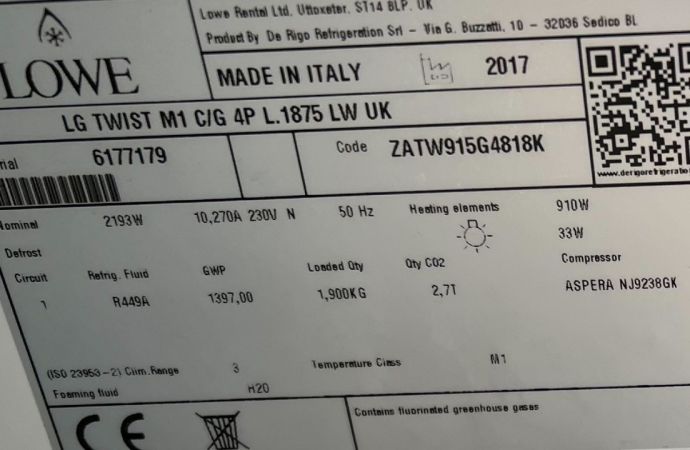Report unveiled at COP 23 by California Governor Brown and former New York Mayor Bloomberg reaffirms U.S. commitment to the Paris Agreement on tackling climate change.

California Governor Jerry Brown signing air pollution bill
Among the ways that a growing number of U.S. states, cities and businesses will work to reduce climate change and meet the U.S. commitment to the Paris Accord will be to seek deep cuts in greenhouse gases in addition to CO2, including HFCs, according to phase one of a new report.
The report, called America’s Pledge, was presented November 11 at the United Nations COP 23 climate change conference in Bonn, Germany. It was unveiled by California Governor Edmund G. (Jerry) Brown Jr., who is COP 23 Special Advisor for States and Regions, and former New York City Mayor Michael R. Bloomberg, who is the United Nations Secretary-General’s Special Envoy for Cities and Climate Change.
The report is the first communication to the international community specifically addressing the scope and scale of non-federal climate action in the U.S. following the Trump administration’s decision to withdraw from the Paris Agreement. Under the Obama administration, the U.S.’s Paris Agreement commitment was to reduce emissions by 26%-28% below 2005 levels by 2025.
California is planning to outpace the HFC emissions reductions expected under the Kigali Amendment to the Montreal Protocol by adopting additional regulations and incentivizing available [low-GWP] refrigerants where available.”
– America's Pledge report
The report points out that HFCs are a small but rapidly growing component of U.S. and global GHG emissions. Moreover, it notes that “successful transition from the HFCs specified by the Kigali Amendment [to the Montreal Protocol] will result in the avoidance of 80 billion metric tons of CO2 equivalent by 2050 and some 0.5°C of warming by the end of the century.”
The report also mentions that natural refrigerants like CO2 and hydrocarbons represent alternatives to HFCs. “The shift away from HFCs is already underway with many businesses transitioning to less HFC-reliant systems,” the reports says.
As an “opportunity to step up,” the report suggests that “states, cities and businesses create public private partnerships and/or incentive programs to accelerate the phase down of HFC use and emissions.” Such collaboration “can include R&D support to businesses developing these technologies, internal commitments to low-GWP equipment procurement, and grant or rebate programs for low-GWP products for homes, businesses or plants.”
In addition, it points out that states – California is already leading in this regard – “can adopt new legislation to ban sales on high-GWP refrigerants in new equipment where lower-GWP alternatives are available.”
The America’s Pledge report cites instances of U.S.-based initiatives that are already reducing HFC emissions through the use of low-GWP alternatives. For example, as part of the U.S. Environmental Protection Agency’s GreenChill Partnership, 43 supermarket companies have committed to reducing their HFC emissions, with 533 stores becoming certified under the program since 2008; many of those stores employ natural refrigerants.
In addition, the report notes, Coca-Cola, Pepsico, Red Bull and Unilever have installed more than 5.5 million refrigeration units using HFC-free refrigerants, with nearly 400,000 of those installed in the U.S. The Target chain is also cited for installing propane display cases in more than 1,000 stores.
Finally, the report includes the pioneering efforts by Canada to reduce “super pollutants” known as short-lived climate pollutants (SLCPs), which include HFCs. Under its SLCP plan, California intends to cut HFC emissions by 40% by 2030, compared to 2013 levels.
“California is planning to outpace the HFC emissions reductions expected under the Kigali Amendment to the Montreal Protocol by adopting additional regulations and incentivizing available [low-GWP] refrigerants where available,” says the report.
For its SLCP reduction program, the State of California was named the winner of the Climate & Clean Air Award in the Outstanding Policy category from the Climate & Clean Air Coalition (CCAC). CCAC announced the awards at COP23. “California represents what fast action on climate change looks like and the enabling environment its policies have created is driving innovation in clean energy and green technology,” said CCAC in a statement about the awards.
The America’s Pledge report finds that a total of 20 U.S. states, 110 U.S. cities, and over 1,400 businesses with U.S. operations representing USD $25 trillion in market capitalization and nearly 1.0 gigatons of GHG emissions per year have adopted quantified emissions reduction targets.
“The group of American cities, states, and businesses who remain committed to the Paris Agreement represents a bigger economy than any nation outside the U.S. and China,” said Bloomberg. “Together they are helping deliver on the promise of the agreement and ensuring the U.S. remains a global leader in the fight against climate change. In Paris, the U.S. pledged to measure and report our progress reducing emissions alongside every other nation. Through America’s Pledge, we’re doing just that, and we’re going to continue to uphold our end of the deal, with or without Washington.”
Related stories






